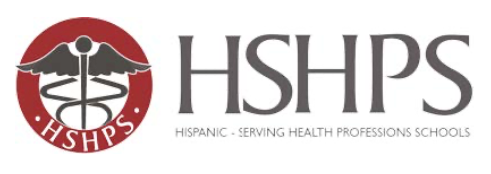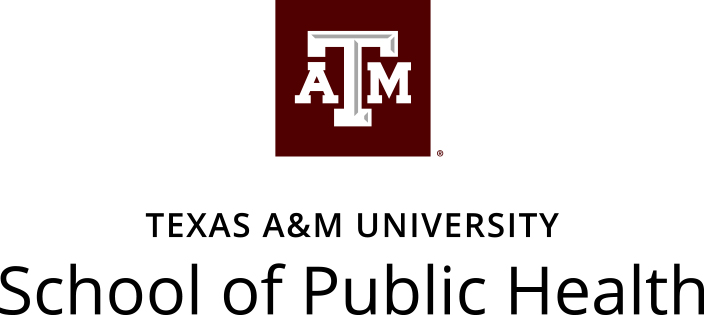Vision
Healthy communities. Healthy people. Everywhere.
Mission
We improve health and quality of life in Texas and beyond by leveraging our vast network and partnerships to produce innovative education, leadership development, research, and public health discovery.
Research Centers
- Center for Community Health and Aging
- Center for Health and Nature
- Center for Health Equity and Evaluation Research
- Center for Worker Health
- Southwest Rural Health Research Center
- USA Center for Rural Public Health Preparedness
Research
- New awards from 9/1 /24 to 8/31/25 were $43.3 million.
- Researchers published more than 265 peer-reviewed papers in 2024 and have made impacts through public health interventions and/or research in all 254 counties in Texas.
- Research expenditures since the founding of the School exceed $171 million, with funding from federal, state, local, nonprofit, and private sources.
- School of Public Health researchers are national leaders in rural health policy, community health and aging, healthcare access and equity, emergency preparedness and response, health economics, program evaluation, occupational and environmental health, and behavioral health.
- Advancing Emergency Response and Public Health Preparedness through research initiatives focused on trauma triage implementation and evaluation. A federally funded project—nearly $1 million in support—is supporting EMS agencies nationwide in adopting and assessing the 2021 Field Trauma Triage Guidelines. Through recruitment, funding, performance monitoring, and development of national guidance, this work strengthens emergency medical systems and informs best practices across diverse communities.
Research Awards
- $25 million: Texas Comptroller of Public Accounts - Texas A&M University Opioid Prevention for Students K-12 (TOPS)
- $5 million: Methodist Healthcare Ministries of South Texas, Inc., Safer Water Projects - This project will evaluate environmental health risks in water and soil by integrating biomarker analysis with community-centered approaches that will assess exposure to hazardous substances such as arsenic, lead, cadmium, and mercury in the Colonias
- $965,000: Henry M. Jackson Foundation, Basic Overarching Cooperative Agreement for the Joint Disaster Medicine, and Public Health Ecosystem (Ecosystem BOCA)/Field Trauma Triage Guidelines Demonstration Project
- $952,000: Centers for Disease Control and Prevention - Tulane University, Region 6 Center for Health Security and Response Readiness
- $943,000: National Academies of Sciences, Engineering, and Medicine - Understanding Protective Factors for the Mental Health and Suicide Consequences of Gulf Climate-Related Disasters
FACULTY HIGHLIGHTS
- Marcia Ory, PhD, named a Fellow of the American Association for the Advancement of Science.
- Shawn Gibbs, PhD, chaired a National Academies of Sciences, Engineering and Medicine workshop on Personal Protective Equipment for Influenza A (H5N1) in High-Risk Farm Settings.
- Cason Schmit, JD, named to the National Committee on Vital and Health Statistics of the Health Resources and Services Administration.
- Timothy Erickson, PhD, received a Fulbright U.S. Scholar Program award in epidemiology and biostatistics to conduct research and teach in Malawi in southeast Africa.
- Jennifer Griffith, DrPH, received the Texas A&M University Distinguished Achievement Award for Teaching.
- Selina Stasi, DrPH, received the Texas A&M University Community Engagement Award.
- Joshua Yudkin, PhD, received the Dorothy Huskey Excellence in Health Education Practice Award from the Texas Society for Public Health Education.
- Cory Cobb, PhD, named a Rising Star by the Association for Psychological Science.
FOUNDED
1998
LEADERSHIP
Dean Shawn G. Gibbs, PhD, MBA, CIH
FACULTY
97
STAFF
128
Departments
- Environmental & Occupational Health
- Epidemiology & Biostatistics
- Health Behavior
- Health Policy & Management
ACADEMICS
Enrollment Totals: 2,633 majors and 377 minors
(Average GPA of BSPH students exceeds 3.5)
- Bachelor of Science-2,068
- Allied Health
- Community Health
- Public Health
- Master of Public Health-338
- Biostatistics
- Environmental Health
- Epidemiology
- Health Behavior
- Health Policy and Management
- Occupational Health and Safety
- BSPH/MPH (3+2) - 39
- Master of Health Administration-91
- DrPH-49
- Environmental Health
- Epidemiology
- Health Behavior
- Doctor of Philosophy-48
- Health Education
- Health Services Research
- Minors-377
- Occupational Safety & Health
- Public Health
Student Excellence
- Ranked #1 in Texas and #27 of 218 Schools and Programs of Public Health by U.S. News and World Report.
- 5th largest public health school student body in the nation.
- The MHA program is ranked #28 out of 96 programs in Healthcare Management by U.S. News and World Report.
- EpiAssist student volunteers provided more than 4,000 hours assisting state, regional and local health departments of Texas with outbreak investigations, disasters and emergencies, community health assessments and other projects.
- BSPH students are actively involved in three learning communities:
- Broad Street Society Honors Learning Community
- Public Health First-Generation Scholars
- Public Health Honors Program
Applied Practice Experience
735
Sites in Texas 
35
US States 22
Countries We provide many learning opportunities for students including applied practice experiences, field trips, and community engagement.

